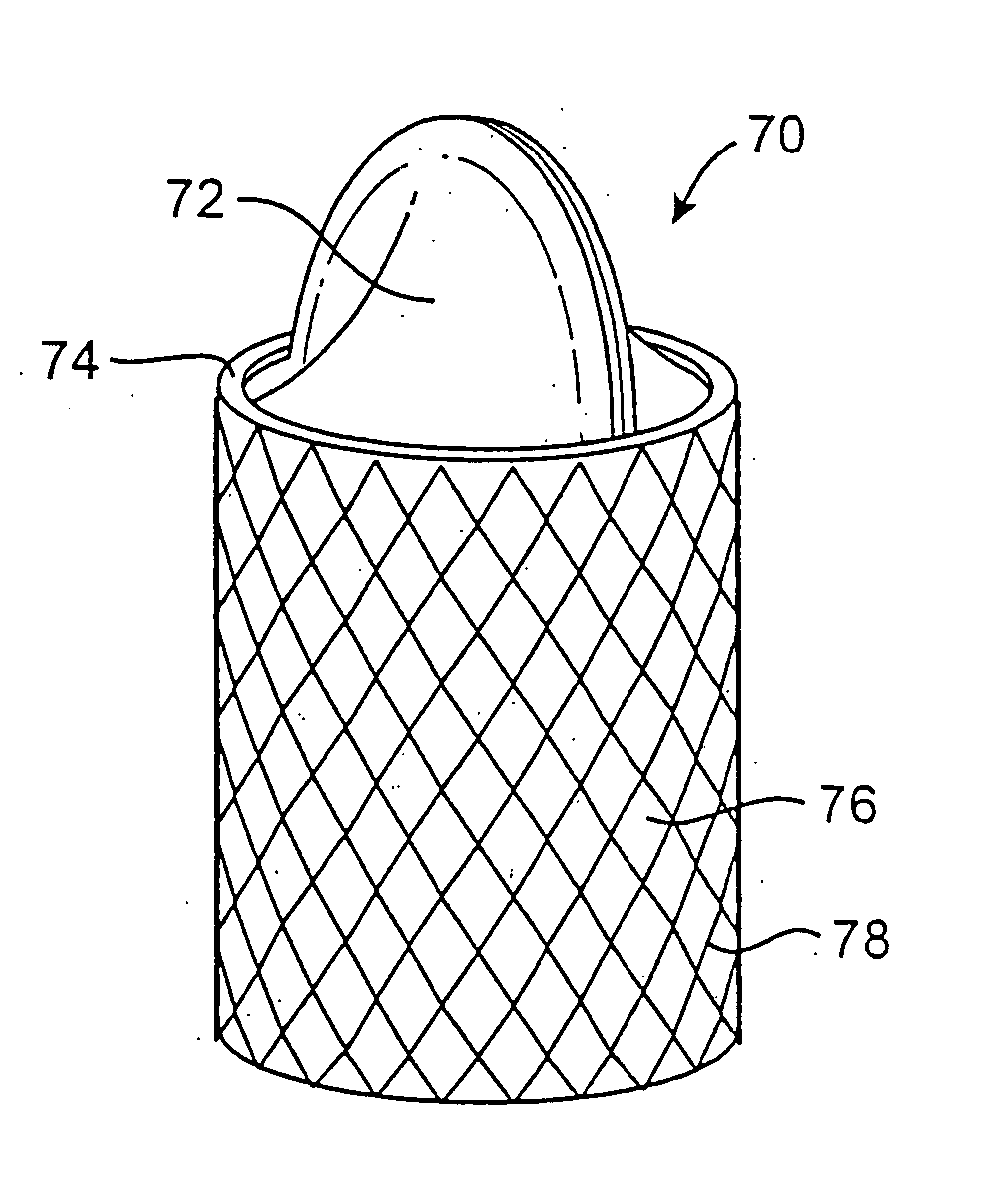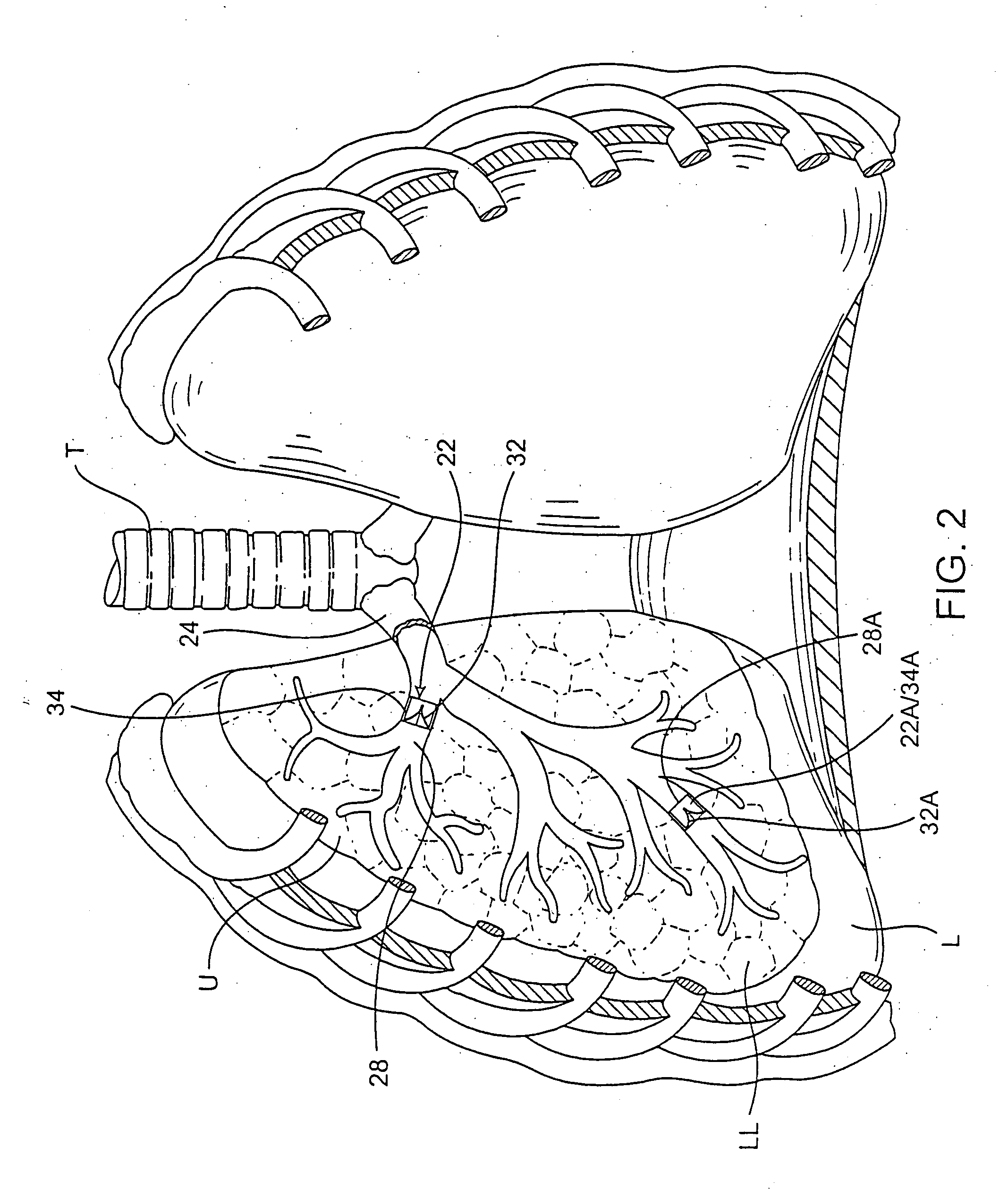Methods and devices for use in performing pulmonary procedures
a pulmonary procedure and pulmonary valve technology, applied in the direction of prosthesis, application, functional valve type, etc., can solve the problems of reducing the ability of one or both lungs to fully expel air, trapping air in the lungs, and unable to maintain the narrow airway open
- Summary
- Abstract
- Description
- Claims
- Application Information
AI Technical Summary
Benefits of technology
Problems solved by technology
Method used
Image
Examples
Embodiment Construction
[0062] The present invention provides methods and devices for performing pulmonary procedures, for example, treating various lung diseases such as emphysema and COPD. One preferred embodiment of the invention provides a flow control element that allows fluid flow in a first direction and controls fluid flow in a second direction. As used herein, fluid means gas, liquid, or a combination of a gas(es) and liquid(s). In addition, controlled fluid flow, as used herein, means that the flow is altered in some manner, i.e., the flow is not unimpeded in the second direction. The specific manner in which fluid flow is controlled in the second direction depends on the construction of the flow control element. The flow control element may, for example, completely block, substantially block, limit, meter or regulate fluid flow in the second direction by a valve or other suitable structure.
[0063] As an example, when positioned in a hollow structure in a patient's body, such as a bronchiole in o...
PUM
 Login to View More
Login to View More Abstract
Description
Claims
Application Information
 Login to View More
Login to View More - R&D
- Intellectual Property
- Life Sciences
- Materials
- Tech Scout
- Unparalleled Data Quality
- Higher Quality Content
- 60% Fewer Hallucinations
Browse by: Latest US Patents, China's latest patents, Technical Efficacy Thesaurus, Application Domain, Technology Topic, Popular Technical Reports.
© 2025 PatSnap. All rights reserved.Legal|Privacy policy|Modern Slavery Act Transparency Statement|Sitemap|About US| Contact US: help@patsnap.com



